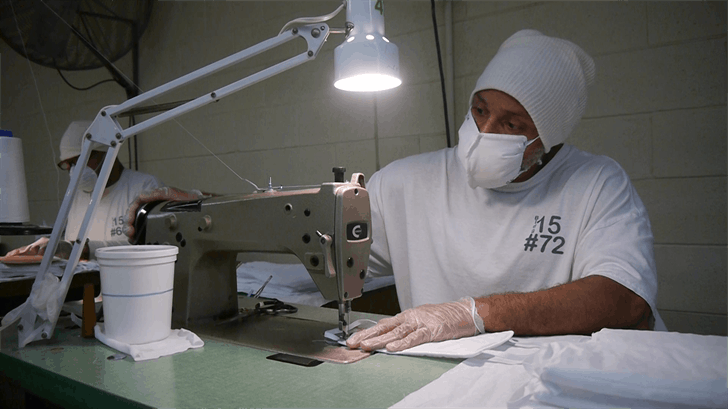The protective face-mask has become the icon of the coronavirus crisis. People wearing masks on the streets were common in Asia where the use of masks was already prevalent before the pandemic.
As the pandemic spreads many fearful citizens across the globe have started to hoard medical masks and some governments have made the wearing of masks mandatory in public places.
The argument for wearing facemasks is simple. The COVID-19 virus can be transmitted by droplets from a person’s cough or sneeze entering the nose, eyes, or mouth of another. By wearing a mask, the wearer protects their mouth from the droplets. Healthcare workers are expected to wear face masks as part of their Personal Protective Equipment, further ingraining the feeling among many that the face-mask is the first line of defense against contracting the virus.
Research is underway over the power of sneezes and coughs in the spread of the pandemic. Official WHO recommendations have estimated that coughs and sneezes travel between one and two meters, but new research in the United States shows coughing and sneezing can project small droplets to up to 8 meters. There is no proof the novel coronavirus can travel that far, but scientists are considering it.
There is general consensus that people who are infected should wear a mask in order to protect others. By wearing masks they avoid projecting their sneezes and coughs over long distances and limiting the exposure of people around them.
Masking the risks?
But most face-masks do not perfectly protect the wearer from the oral inhalation of droplets. High-grade medical masks seal the edges of the mask and cover the nose perfectly, but many of the masks worn by people today offer no such guarantees. A small crease on the side of the mask or open space around the nose could be enough to allow droplets in, as they do not necessarily travel in a straight line from the transmitter to the receiver.
Taking a mask off and disposing of it in a proper way is crucial to the level of protection masks offer. Many wearers could contract the virus simply by improperly handling, or disposing of, the masks after they have returned home.
The reason the WHO has recommended people not to wear masks unless infected has little to do with the efficacy of the equipment. Most masks are single-use disposable products for hygienic reasons, effectively using face-masks requires a lot of masks per individual. With shortages in PPE available for healthcare workers around the world, the WHO is fearful of shortages of masks for those who need them most, as people around the world stock-up on the product.
The Czech Republic is now making the masks mandatory in public, and many governments are contemplating similar measures. The Czech government is even actively spreading it’s the pro-mask approach to other nations, but many experts fear the masks give users a false sense of security.
Dr Shunmay Yeung told the BBC: “If you are not close to people that are directly coughing or sneezing on you, a mask is not needed.”
Yeung highlighted that it often contacts through the hands that spread infections. People can wear masks, but if that gives them the confidence to go out where they touch surfaces many others have touched, rubbing the eyes or scratching the face could already pass the virus. Taking off the facemask improperly (by touching the mask itself) can expose the user to the virus and lead to infection.
Much is still unknown about the novel coronavirus and, as experts are grappling with the specifics of transmission and infection, people around the globe are looking for ways to protect themselves. Until more is known, proper hand hygiene and staying informed by following WHO recommendations appear to be the safest way of collectively dealing with the pandemic. For people who do choose to wear a mask, please follow WHO instructions on how to wear and dispose of them to minimize risks through improper use.

